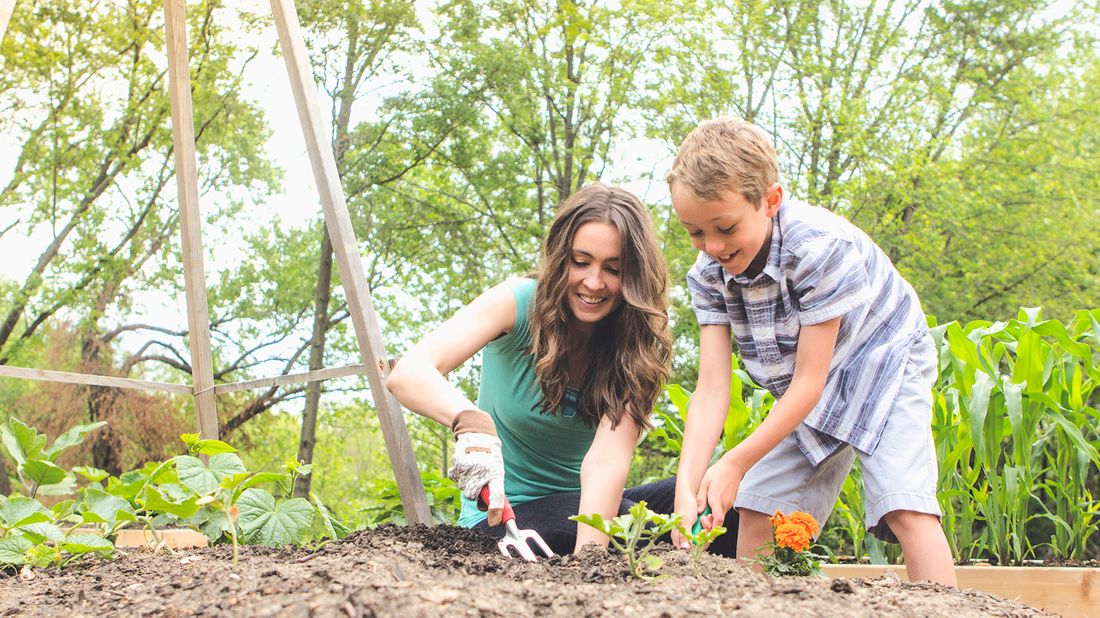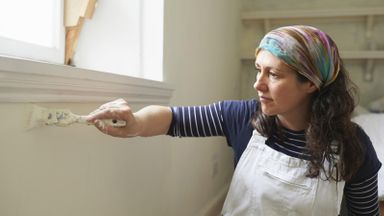5 Things to Know Before You Start a Vegetable Garden

With the exception of growing potted basil on our apartment’s fire escape, my family’s prior experience with growing any kind of food was fairly limited. But as with many other families in quarantine, we took up gardening because of the free time we had on our hands and the modest yard we had acquired after a recent move. It was the perfect opportunity to try growing our own produce and herbs.
The experience has been extremely gratifying — not only has our grocery bill gone down, but having a garden has also reinforced valuable life skills such as planning and patience. But before you start splurging on gardening supplies, here are five things to know before you decide to start a vegetable garden.
IT’S BETTER TO START SMALL
If you are just starting out, resist the urge to grow too much right away. “The single most important part of starting a garden is to start with a couple of things you can watch,” says Michele Paladino, owner of Gowanus Nursery in Brooklyn, New York. First identify the types of produce your family likes best, and research what growing your chosen vegetables, fruit and/or herbs will entail.
SEASONALITY IS KEY
Next you’ll want to think about what it makes sense to plant and where your garden will thrive. For example, a vegetable garden will need at least six hours of direct sun each day. Seasonality is an important factor as well. Certain vegetables like kale, broccoli and spinach are best grown in cooler weather, while corn and cucumbers do better in warmer temperatures. Some vegetables, such as radishes, can be planted multiple times a season. This guide offers state-by-state recommendations for the best time to plant.
Rather than purchasing young plants, Paladino also recommends beginner gardeners start with seeds. “They are easy and rewarding, and encourage you to tune into the plants and what they are doing,” she says. Some vegetable seeds grow better when they are planted indoors, including tomatoes and peppers, while others such as carrots and beets can be started right in the ground.
YOU DON’T NEED A TON OF SPACE
While a sprawling yard might seem like a requirement for starting a garden, apartment-dwellers or those with limited outdoor space still have options. There are plenty of fruits and vegetables that can flourish in window boxes, five-gallon containers or gardening pots. In fact, many vegetables grow particularly well in containers, including peas, summer squash and green beans. The same is true for a variety of fruit trees, including citrus, figs, avocados and cherries. To make the most of your space, choose plants that have similar sun and water requirements.
SOIL HEALTH IS IMPORTANT
Healthy soil is essential to a thriving garden. If you’re starting your garden from scratch, organic potting soil is a good choice, whether you’re planting in a pot, raised bed or directly in the ground. If you are working from an existing garden, consider testing the pH of the soil, which you can do by purchasing a kit from a local gardening or hardware store. If you find your soil is too acidic or too alkaline, there are fairly simple steps you can take to adjust it.
For gardens that are designed to grow food, it’s also important to test your soil for lead and other harmful contaminants. Gardens located in larger cities are especially vulnerable to various metals. For a nominal fee, you can send a sample to a local lab for a full soil profile. You can find one by checking your state’s U.S. Department of Agriculture website.
IT WON’T COST A TON — AND COULD HELP YOU SAVE
Starting a produce garden is fairly inexpensive. Individual seed packs often cost less than $5 and can be purchased from many online retailers. Other supplies, such as potting soil and fertilizer, as well as a set of basic gardening tools and gloves can be found for less than $20. All in all, unless you are planning a large garden, you can expect to spend less than $100 to get things up and running.
As for those grocery-bill savings? Experts estimate that a well-maintained garden can yield half a pound of produce per square foot. If you have a 600-square-foot garden, that means potentially 300 pounds of produce, which translates to a savings of $600 a year.
Feel better about taking action on your dreams.
Your advisor will get to know what’s important to you now and years from now. They can help you personalize a comprehensive plan that gives you the confidence that you’re taking the right steps.
Find your advisor




